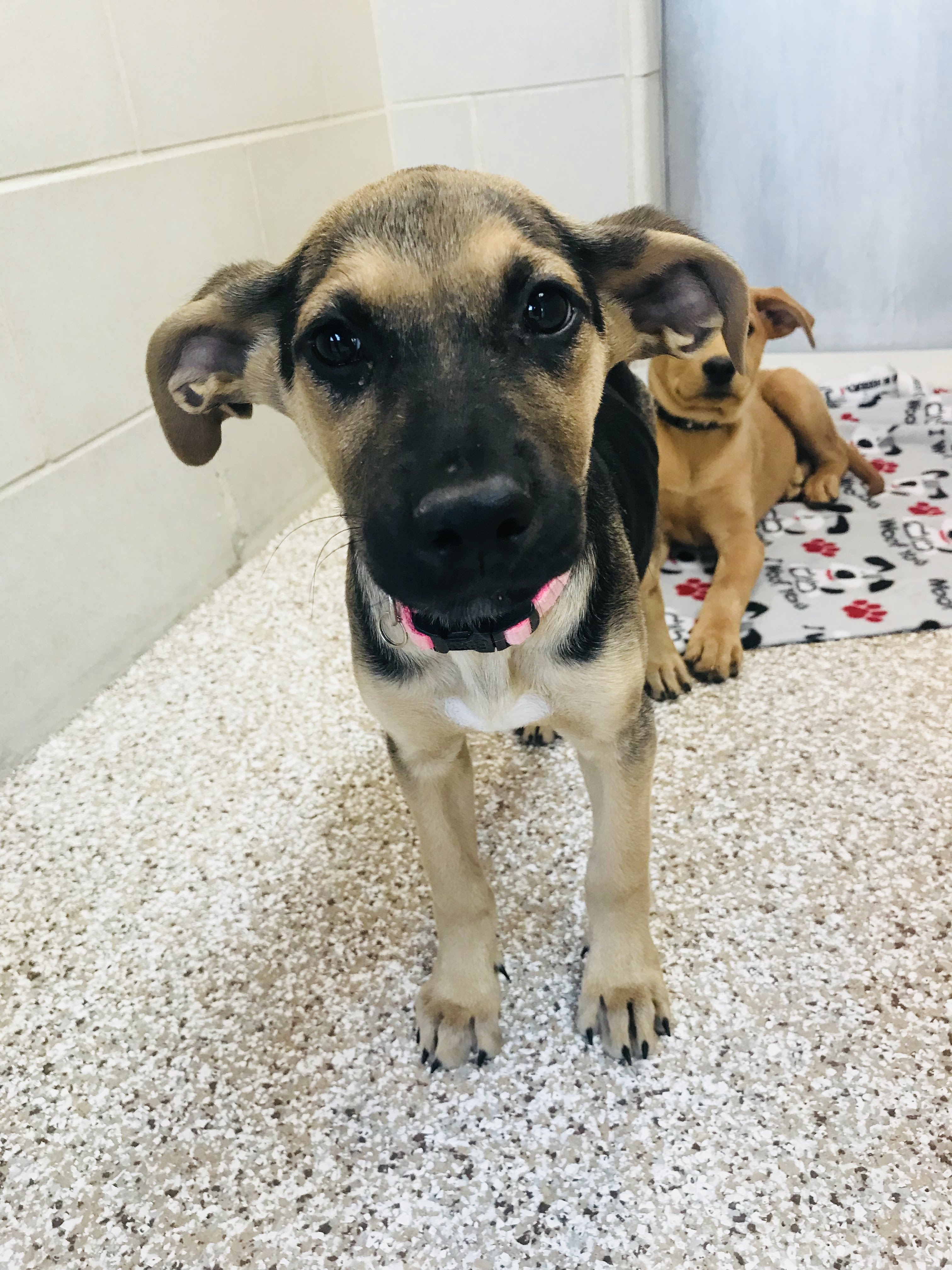Allison Hartlage, CTC, KPA-CTP, CBCC-KA, CNWI
Manager of Animal Training & Behavior
Do you ever look at your dog and wish they could tell you what they wanted, need, and how they were feeling? Good news – they are! The main ways dogs communicate are body language and vocalization – both subtle and overt. Dogs might not be able to talk to us (we wish!), but they are excellent communicators and great listeners. Our dog’s people-skills help them learn new tricks, understand our “rules,” master incredible jobs like service and police work, and provide us emotional connections and bonds. It’s time us humans worked on our dog-skills!
We might joke that our dogs are master manipulators, when in fact, they are expert communicators – they know how to get what they want and need, when they want and need it! 🙂 Every day they ask for our help! They might happily bring their food bowl to you when they think it’s time for dinner, or put their head on your lap and give you their best puppy eyes as they tempt you for a bite of your sandwich. Maybe when you utter the word “walk,” they run to the door, bouncing, barking, and stomping their feet in excitement. These moments of adorable silliness make us laugh, (perhaps) honor their request, and definitely result in some extra pets and doggy-voice gibberish. These antics are some of the best parts of life with a dog!
Think again about a day in the life of your dog – how might they be reaching out to you for support, clarification, stability, or safety? As their guardians, it is our responsibility to be their safety net. What happens when your dog says “no?” Your dog might tuck their tail and widen their eyes when they go to the veterinarian – it can be scary not to understand where you are and why. They might growl when they need space, and snap if they aren’t being listened to and further express their need for distance – we all need our space (and right now it feels it’s even harder to come by, especially inside). Maybe your dog runs to the basement, wide-eyed and trembling, because they think it’s time for a bath – although you might sound like a Billboard star when singing in the shower, the acoustics and textures of the tub are heightened and can be strange to them. They are talking, we need to listen.
Can you think of a time when you weren’t heard — how did that feel? When you are afraid, how do you prefer to overcome it – kicking and screaming, shaking and crying while being overwhelmed and flooded by the scary thing? No, thanks! Science has proven that dogs (and people) learn best and thrive when they are comfortable in their environment and feel safe. There are puppy steps you can take to help your dog overcome their fears and anxieties and the long-term success is much greater and fulfilling for all parties. Whenever you want to work on a new behavior, whether it’s a fun new trick, or getting them used to riding comfortably in the car, the first step is to determine what motivates your dog and make sure they feel safe enough to value that reward. Some dogs will enthusiastically take kibble, others want you to up your ante to a high-valued hot dog or cheese, some prefer a tennis ball toss, and then there are those who relish in an off-leash romp (in safe and law-abiding areas, of course).
If you look carefully, what is your dog trying to tell you? Are you listening with your ears as well as your eyes? When we resume our normal activities again, your listening skills will come in handy! If they tell you they love hiking by wagging and eagerly approaching a trailhead, then hike! If they happily enter your workspace and are happy to greet your colleagues (and maybe other office dogs) on their own terms, then bring them! If they are saying they’d rather not, do you listen? You may want to bring your dog to a brewery or to the dog park, but maybe they’d rather stay at home – that’s ok! Loving relationships are characterized by good communication, understanding one another’s needs, and respecting and supporting our individuality that makes us who we are.
So, how can you be your dog’s best friend? Listening! We guarantee, they will love you for it!
In addition to providing over 950 shelter animals with behavioral support, HSBV’s Training & Behavior Center offers animal behavior classes on a variety of topics throughout the year! Our team is here to help you and your dog’s relationship blossom and thrive. Check out our calendar and sign up for an upcoming virtual course or one-on-one consultation today to learn more about how your dog communicates with you!


